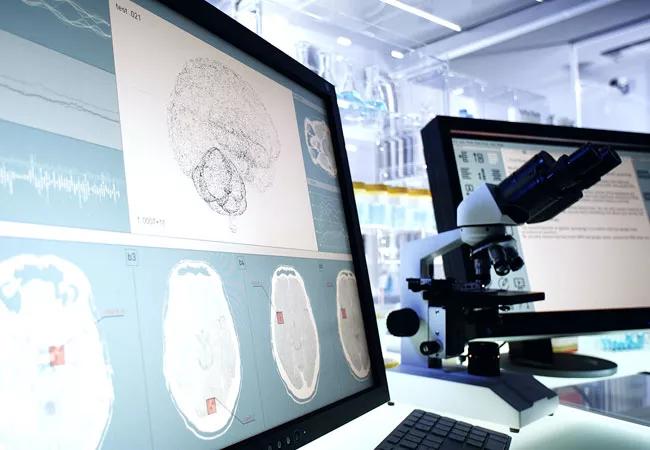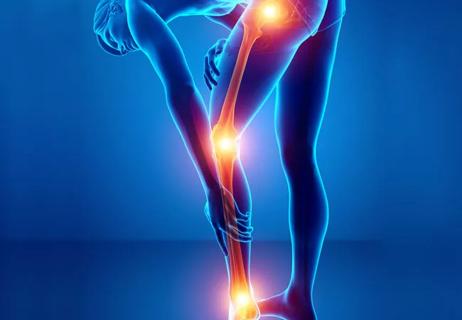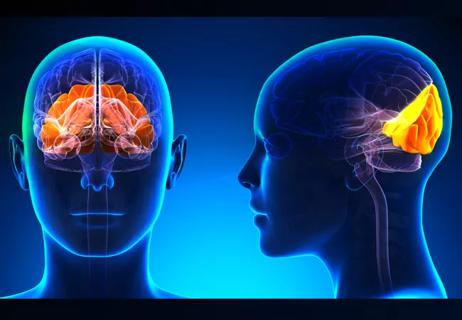New research combines EEG with artificial intelligence to diagnose pain accurately and objectively

Arriving at an objective diagnosis of pain has long been a difficult and inaccurate process that relies almost entirely on self-reporting of symptoms. A new methodology developed by a researcher now at Cleveland Clinic may ease this process for physicians. The study, led by Carl Saab, PhD, combines electroencephalography (EEG) and artificial intelligence to diagnose pain. The study was recently published in NeuroImage
Cleveland Clinic is a non-profit academic medical center. Advertising on our site helps support our mission. We do not endorse non-Cleveland Clinic products or services. Policy
According to Dr. Saab, the director of the Pain Science Technology And Research (STAR) Lab at Cleveland Clinic’s Lerner Research Institute, “Our approach offers a significant improvement over the current gold standard for assessing pain, which is what we call the ‘smiley face report’ that you are typically asked to fill out at primary care or the emergency clinic—a frown for pain, a smiley face for no pain.”
Dr. Saab and his team developed and trained an artificial intelligence platform to objectively detect and classify pain using EEG scans from three groups: healthy patients; patients diagnosed with radiculopathy; and patients with chronic back pain who were scheduled to undergo surgery to implant a pain-relieving assistive device.
The researchers trained the computer algorithm to compare and correctly distinguish patterns among the EEGs of the different subject groups, all matched for age and gender. The machine learning algorithm performed significantly better than chance in correctly distinguishing between healthy patients without pain and those with chronic pain. It also accurately distinguished the patients scheduled for surgery from all the other subjects.
While earlier studies of EEG-based pain detection have focused on long EEG durations, this new algorithm investigated shorter events at the sub-second scale, thus providing a novel scientific understanding of the mechanisms of pain in the human brain.
“EEGs give us so much data and helpful information on sensory states that artificial intelligence tools are necessary to decipher at all,” notes Dr. Saab. “Now, with the use of our algorithm, pain diagnosis may become much more precise and, importantly, can be an automated process.”
Not only will the algorithm help automate and streamline the process of diagnosing pain, but Dr. Saab says it may also help automate medical decision making by providing caregivers actionable information.
Currently, pain medicine specialists identify patients who may be good candidates for the assistive device surgery (implantation of a spinal cord stimulator) based on subjective self-reports from patients and recommendations from a panel of healthcare experts after analyzing patients’ long-term health histories. This algorithm could simplify and streamline a patient’s decision to undergo surgery by providing quickly generated and objective empirical evidence.
Misdiagnosing pain can make treatment difficult and has contributed to the overprescription and abuse of opioids, a major health crisis in the United States. “Considering that assessing new or unusual pain is a common onramp for diagnosing the majority of health conditions, this is an exciting new methodology that could potentially transform healthcare,” says Dr. Saab. “It may also pave the way to apply a similar approach for assessing mental health conditions like depression and anxiety.”

National Institutes of Health grant supports Cleveland Clinic study of first mechanism-guided therapy for CRPS

New technologies and tools offer hope for fuller understanding

While logistical challenges remain, exasperated patients could have a new treatment option

Know diagnostic criteria to make quicker referrals for specialized care, expert urges

Study helps identify patients likely to benefit from continuous monitoring

A closer look at subanesthetic intravenous ketamine infusion

ONS shown to be successful

Study is looking at high-frequency SCS